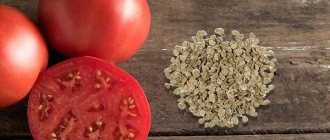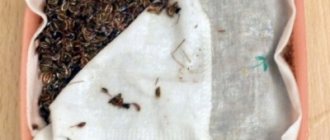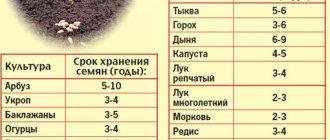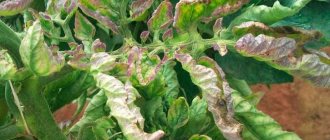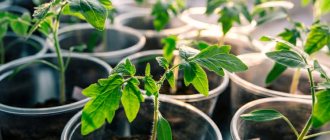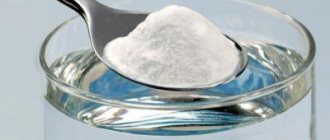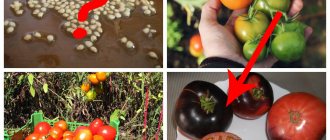Before growing seedlings, you need to make sure that the seeds have a high germination rate. This indicator demonstrates the ability of seeds to produce high-quality seedlings under certain conditions. The percentage of germination directly determines whether healthy and full-fledged seedlings will be produced in the future. Let's look at the 7 simplest and most effective ways to test germination.
Using paper or fabric
To check this method, you need to take about 10 seeds (cabbage, carrot, salad, etc.), a small container covered with a paper or cloth napkin. Place them on a napkin, keeping a distance of about 1 cm from each other. Then moisten the seeds with slightly warm water from a spray bottle, avoiding too much soaking. After this, cover the container with polyethylene and place in a warm place.
You need to inspect and moisten the seeds once a day so as not to miss the seedlings and prevent them from drying out. After some time, the sprouts that have hatched will become noticeable and need to be counted. The best germination rate implies the germination of at least 6 out of 10 seeds.
Seed germination conditions
The conditions for seed germination imply the correct regime of watering and heat. Garden crop seeds germinate at temperatures not lower than +20 °C and not higher than +30 °. Greens can sprout at low temperatures - from 8 to 12 degrees Celsius.
Humidity is no less important for seed germination. It varies within 20% for local seeds and 3% for foreign ones. When humidity increases, seeds germinate faster, but it is important not to allow excess water - the seed may rot and become moldy, and the embryos will die. Large and full-bodied seeds remain viable longer and almost always sprout. The seedlings from them turn out healthy and strong, and subsequently produce a large harvest.
The germination of seeds also depends on the depth of sowing - small seeds are not buried, larger seeds require deeper sowing. The sowing depth for celery is about 0.5 cm, onion - 1 cm, watermelon - 1.5 - 2 cm.
Important! The sowing depth can be calculated using the formula 3d, i.e. it is the depth of three times the size of the sowing seeds.
For purchased seeds, the expiration date is indicated on the packaging, but due to improper storage they may lose their viability.
Germination on the packaging is indicated in a laboratory under ideal conditions; at home, such germination is almost impossible to achieve.
In fresh or salt water
Almost all garden crops can be tested using this method. You need to select the seeds and pour them into a convenient container (shallow glass, jar or saucer), add water and mix. If the seeds of tomatoes, cabbage or radishes were taken for testing, you should use salted water instead of fresh water, diluting 1 tsp. salt in a glass of water. After 10 minutes you can check the seeds. Those that remain at the bottom will germinate without problems, but those that are on the surface are useless for germination.
4 mistakes in growing beet seedlings that cause them to grow frail
Seed germination period - how long does seed germination last for each vegetable crop?
Seed germination is determined by the type of garden crop. Each plant has its own seed germination period. Legumes germinate in a week , seeds can be stored for about 5 years; The germination of bell pepper, tomato, and eggplant seeds is determined within two weeks . Their suitability for sowing remains for five years.
In carrots, seed germination is 7-10 days , the shelf life is reduced to three years.
Cabbage sprouts within a week , and its seeds can be stored for five years.
In cucumbers, pumpkins, watermelons and melons seed germination is two days ; seeds can be stored for up to 8 years.
Radishes and radishes sprout within a week , and seeds can be planted for up to five years.
Corn has a reduced shelf life; shoots appear on days 5–6 .
In a solution of potassium permanganate
The principle of this verification method is the same as in the previous case. However, adding potassium permanganate to water allows you to simultaneously disinfect the seeds. It can be applied immediately before sowing into the ground. To check, you need to take a saturated solution of potassium permanganate and dip the seeds into it. Those that remain at the bottom are removed from the solution, dried and used for germination.
Germination time of seeds of some vegetables and herbs (days)
- Tomatoes, cucumbers, radishes, radishes, turnips, beans - 7,
- Sorrel, beets - 8,
- Eggplant, tomato, carrots, zucchini, beans, cabbage, lettuce - 10,
- Onions - 12,
- Parsley, rhubarb, dill, celery - 14,
- Sweet pepper - 15.
The germination energy of seed material for any plants is determined 2-5 days earlier than their germination level. Despite the fact that most plant seeds germinate in a week or two, when determining the germination of various types of flowers, you must rely on the data specified in reference books or on the packages of seeds of these plants from the store. This is due to the fact that for each type of flower, even among varieties of the same species, the germination period can vary greatly. In addition to the percentage of germination, when determining the germination energy of seed, we also pay attention to the uniformity of the appearance of sprouts. Only those seeds that germinate together produce the strongest seedlings.
Using gauze
To check the percentage of germination, take several layers of gauze and moisten it with water from a spray bottle. Unfold the gauze, distribute the seeds in several rows on one layer, then cover with another layer and do the same with the remaining seeds. After this, fold the gauze into a stack or roll it into a roll and place it in a thin plastic bag. The thinner the package, the less carbon dioxide content will be, which prevents seed germination. The bag of seeds should be placed in a dark place and, after 10–12 days, the germination rate should be assessed by counting how many seeds have sprouted.
Seed germination percentage - calculation rules
Seed germination is considered as the ratio of germinated seeds to the number of seeds sown as a percentage under normal conditions for germination. In this case, additional growth stimulants should not be used, since it is necessary to evaluate the quality of the seed under natural conditions.
The seeds germinate unevenly, some germinate every other day, others after ten days. The average time for sprouts to appear is a week. The period of entry depends on the age of the seeds - the older, the longer they take to germinate. A sufficient percentage of seed germination is considered to be half.
Mold seeds must be thrown away regardless of shelf life.
Using sawdust
It is better to check large seeds this way. First, sawdust should be doused with boiling water, then poured into drawers or bowls. Place the seeds on top, leaving a distance of 3 cm between them. Sprinkle everything with sawdust again and compact it. The containers should be covered with film and placed in a warm place. After a few days, you can count how many seeds have sprouted.
What to do if the seeds are very small
It is difficult to evenly distribute the seeds when sowing if they are small, such as carrots, turnips, parsley, dill, and sorrel. But there is a trick that will make this task easier.
Cut ribbons of arbitrary length and 1-3 cm wide from toilet paper or newspaper paper. Glue the seeds on them using flour (or starch) paste (1 tbsp per 100 ml of warm water), placing them 2-3 pieces at a distance 3-5 cm. Seeds can be taken with tweezers or a match moistened with water.
After the paste has dried, roll the strips - this makes them convenient to store and transport. When sowing, place the strip in a groove 1-2 cm deep that has been previously spilled with water.
Carrot seeds take a very long time to germinate (up to three weeks) and require pre-treatment before planting.
Using a paper roll
An unusual way to determine the quality of the seed mass is using a notebook. You need to cut out a 25x25 cm square from this paper, hold it in warm water for 2-3 seconds, shake off excess water and spread it on a flat surface. Then place the seeds on the paper, roll it up and place it in a bowl of water so that the water does not cover the seeds. After this, cover the container with film, place it in a dark place and wait for germination.
Cheat sheet for feeding tomato seedlings to add the right components on time
Checking the germination of carrots
Carrot seeds usually germinate in 30-40 days due to the prolonged dissolution of the tannin shell. They protect the seeds from frost, delaying the emergence of seedlings. If you only need to soak the seeds of other plants in water to determine their germination, then with carrots you will have to work a little. But this must be done. Due to the long period of seedling germination and lost time, poor-quality planting material can leave you without this useful vegetable.
- Take a piece of thick fabric, sprinkle dry seeds on it, then tie the ends of the fabric with an elastic band to make a fabric bag;
- Pour water into a bowl (50ºС) and lower the bag into the water for a few minutes, then immediately immerse it in another container with cold water, also for a few minutes. This is done three times a day. After 2 days, all tannins from the surface of the seeds will be washed off. Remove the seeds from the bag and dry them on a plate or paper towel;
- Pour a 2-3 cm layer of soil into a shallow container (box), scatter the seeds, and then add a thin layer of soil on top. Moisten the soil. The first shoots should appear in 10-15 days. You can check germination by spreading the seeds between layers of damp cloth.
Dear readers, if you are not sure about the quality of the seeds, be sure to check them for germination without waiting for the start of the gardening season.
Have a good harvest!
Calibration as a preparatory stage
The meaning of calibration is to sort seeds by size. Three containers are taken into which large, medium and small specimens are analyzed.
Along the way, during a visual inspection, seeds that are darkened, with traces of mold, bent or chipped are discarded. They will not produce a full harvest and can infect neighboring seedlings when growing seedlings.
The sorted material is planted in three boxes. This technique allows you to obtain uniform shoots and uniform development of plants.
Calibration can be done using a plastic object electrified with woolen cloth. This method allows you to check for the presence of “dummies” among seeded specimens. The seeds are laid out on a smooth surface, electrically charged plastic is brought several times at a distance of 1 cm. Hollow, low-quality seeds stick to the surface of an improvised magnet.
On a note! The size of the grains is not always an indicator of their quality. It has been experimentally proven that full-fledged medium and small specimens have a high germination rate and produce a good harvest.
Sterilization of garden soil
Garden and vegetable soil probably contains fungi and bacteria, which in the future can destroy your seedlings. Often, rot begins to develop on pepper seedlings, and you may lose at least half, or even all of the seedlings. This applies not only to peppers, but also to cucumbers, tomatoes and other crops. To prevent this from happening, the soil should be heated in the oven for two hours before sowing.
Place the soil on a baking sheet, place in the oven and heat it to 180-200 ⁰C. If you have a summer kitchen with an oven, then it is better to sterilize the soil there, because the not-so-pleasant smell of baked soil lingers indoors for a long time. After roasting, let the soil cool and moisten it well: after steaming, there will be no moisture in it.
Preparation of seedling soil
Then, from equal parts of sterilized soil, humus and sand, you need to make a soil mixture for seedlings. Sawdust can be used as a baking powder instead of sand. The main thing is that the soil is loose. Then it will be easier for the root system to develop, and by the time it is planted in the ground it will fill the entire container. To be on the safe side, two days before sowing, you can water the soil with a solution of potassium permanganate.
- Japanese quince: planting and care, description of varieties
If you sow seeds in purchased soil, you do not need to disinfect it.
substrate for plants
What to do with the test results?
Knowing the germination rate of seeds, you can correctly calculate the sowing rate and find a replacement for absolutely non-germinating seeds in time. Seeds are considered qualified (suitable for sowing) if the number of germinated seeds is 90% or more. Such seeds do not require the use of methods to increase germination. Although modern means for pre-sowing seed treatment also have a preventive effect - they increase the resistance of seeds to diseases and different growing conditions.
If the germination level is within 50%, then experts recommend increasing the seeding rate by 2 times.
If the indicator is below 30%, it is not advisable to sow seeds. Of course, if we are not talking about valuable or rare plants that must be preserved.
How to increase
Energen
Heteroauxin
Copper sulfate
Boric acid
Potassium permangantsovka
Pre-treatment can give an impetus to the germination of even low-quality seeds:
- Soaking in a solution of stimulants (preparations Energen, Heteroauxin) or microelements (copper sulfate, boric acid, potassium permanganate - 2 g per 1 liter of water). The seeds are poured with a prepared solution at a temperature of 20 degrees for 3 to 4 hours.
- Hardening . The seeds are soaked for 15 - 18 hours in water + 20 degrees. Then placed in the refrigerator for 14 days.
- Warming up in hot water . The seeds are placed in water heated to +50 degrees for 20 minutes. Then rinse with cold water.
The method of heating in hot water is not recommended for tomatoes. In this crop, the procedure slows down the germination process.
other methods
Experienced gardeners determine the germination of seeds not only by immersing planting material in salt water. You can check the quality of pepper grains by electrification or germination.
Electrification method
Dry pepper seeds are laid out on a smooth surface. Take a plastic ruler and electrify it using woolen cloth. The “charged” instrument is passed several times over the grains at a distance of no more than 1 cm. Hollow specimens will definitely stick to the electrified object. You need to get rid of them, as they will not sprout. Those that remain on the surface are planted.
Germination
The period for determining the germination of pepper by germination method is carried out 10-15 days before the intended planting in the ground.
Place a cotton cloth soaked in water at the bottom of any container. It should be moist enough, but at the same time not too wet. Excess moisture can cause the grains to rot. Seeds are laid out on the material - 10 pcs. Cover the top with a damp cloth and cellophane and put it in a warm place for 5-7 days. The film is periodically removed, and the material is moistened if necessary. In about a week the first shoots will appear. Germinated specimens are ready for transplanting into the substrate. Those that do not hatch are thrown away or wait a few more days. Perhaps they will still sprout.
The germination percentage is calculated based on how many copies sprout. If 2 seeds hatch, then the germination rate is 20%, 3 – 30%, etc.
Germination can also be carried out on toilet paper or substrate (perlite, vermiculite).
How quickly do seedlings appear?
You need to check the germination of seeds at home if you are not sure that you bought high-quality ones or that they have been stored for more than 5 years. Checking is also recommended for personally harvested seeds. On average, the growth period of most crops is from 7 to 10 days. In order for seedlings to appear faster, it is necessary to organize favorable conditions. It is advisable to maintain the room temperature within 20°C -25°C and moderate humidity. The room must have normal ventilation. The seeds will spoil if there is no air supply to them. Some types of greens and flowers require light to germinate; this will be indicated on the packaging.
If normal conditions are not organized, then there is no point in waiting for germination, for example, if the seeds are covered with dense material or sprinkled with soil. Germination is affected by the quality of the seeds themselves, which may be overdried, unripe, or affected by diseases and insect pests.
For which seeds will the water immersion method be reliable and for which will it not?
There are thousands of different types of seeds. Most often, this method is relatively indicative for seeds such as melon, watermelon, cucumber, pumpkin, pepper and tomato. But it is most accurate for melons and cucumbers. In this case, the seeds must be fresh and not overdried.
Bagged seeds from the store are purposefully dried as much as possible to increase shelf life. Therefore, for such seeds, a test with water will not be indicative; it is much more difficult for seeds that are too dry to drown. In addition, many commercial seeds are coated with a special coating of a fungicidal drug, and once placed in water, its effect will be completely neutralized. Other seeds are coated to facilitate sowing, and there is no need to conduct such experiments with them either.
The method is also not suitable for testing the viability of seeds that are naturally very dry, such as dill, coriander, corn and okra.
Some seeds, especially those from the Asteraceae and Ranunculaceae families, have fluffy tails. Seeds that have this characteristic will never pass such a germination test, since they are not able to sink in water. Some seeds (such as flax) form a sticky mucilage on the outside of the seed when it absorbs water. And when there is a mucous membrane around the seed (when wet they become very sticky), this also prevents them from sinking to the bottom.
The floating seed test works best with hard seeds, for example it is effective in testing the germination of pea or bean seeds.
Summarizing all of the above, it can be argued that if there is a desire to conduct such a test, then it is best to do this with the seeds you actually collected, which you have in abundance, in order to really select the best of the best. But it is more effective to use another method of checking germination. For example, germination.
Germination test by germination method
